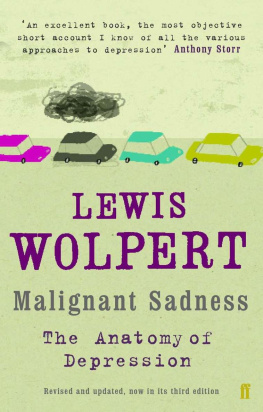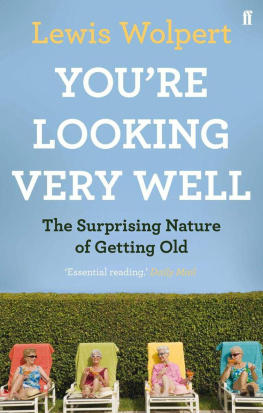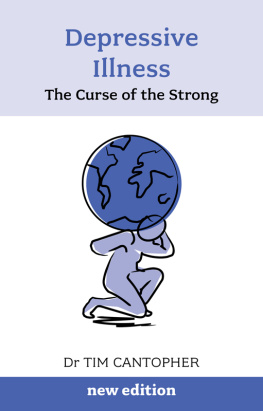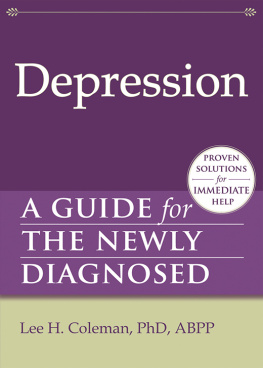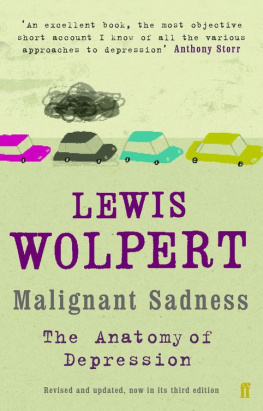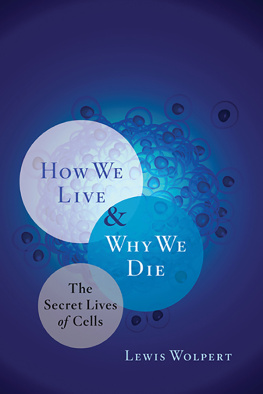Malignant Sandness
The Anatomy of Depression
LEWIS WOLPERT
Contents
Acknowledgements
Giving thanks is little recompense for all the help I have received. Maureen Maloney typed the manuscript and a first draft was read by Professors Martin Raff and Hugh Freeman, who made invaluable suggestions. Cynthia Kee listened to me read the whole manuscript to her and helped to improve it. My publishers, of course, played a key role: Julian Loose, my editor, and Robert Potts, my copy-editor. My agent Anne Engel was always encouraging, but it is too late to thank my wife Jill Neville for making me write the book in the first place. Finally, I am indebted to the authors of a large number of papers and books on the science of depression whose individual contributions I have not acknowledged.
L.W.
Introduction
It was the worst experience of my life. More terrible even than watching my wife die of cancer. I am ashamed to admit that my depression felt worse than her death but it is true. I was in a state that bears no resemblance to anything I had experienced before. It was not just feeling very low, depressed in the commonly used sense of the word. I was seriously ill. I was totally self-involved, negative and thought about suicide most of the time. I could not think properly, let alone work, and wanted to remain curled up in bed all day. I could not ride my bicycle or go out on my own. I had panic attacks if left alone. And there were numerous physical symptoms my whole skin would seem to be on fire and I developed uncontrollable twitches. Every new physical sign caused extreme anxiety. I was terrified, for example, that I would be unable to urinate. Sleep was impossible without sleeping pills: these only worked for a few hours, and when I woke up I felt worse. The future was hopeless. I was convinced that I would never work again or recover. There was the strong fear that I might go mad.
I had never been seriously depressed before. On previous occasions the way I dealt with mild depressions feeling low was to go jogging. Enquiry among my fellow joggers confirmed my view that we do not exercise for health but to avoid mild depression. The widely held belief that exercise raises endorphin levels and so provides an uplift in mood turns out to be based on quite reasonable scientific evidence. I have to admit that I then rather sneeringly proclaimed that I believed in the Sock School of Psychiatry just pull them up when feeling low. But that certainly does not work with serious depression. The origins and course of my own depression, and my recovery from it, will be described in later chapters.
My wife, Jill Neville, was embarrassed by my being depressed and told colleagues and friends instead that I was exhausted from a minor heart condition. She was worried that if the truth were known it would affect my career. When I recovered, I was most uneasy about the stigma associated with depression, and the shame felt by many sufferers; it seemed to me a serious illness of which one should not be ashamed. I therefore decided to make my depression public and wrote an article about it in the Guardian newspaper. This brought an astonishingly positive response. Patients, doctors and those who had had the experience of living with someone who is depressed found it helpful to have the subject discussed in so open a manner. Of everything I have written, both books and scientific articles, this article was most widely read and appreciated. When people complimented me on being so brave, I realised exactly how much stigma is still associated with depression. In fact it was quite easy for me to write about since I had a secure academic position and so nothing to lose.
After I had emerged from my depression I thanked the psychiatrist who had treated me for all her help. I then asked her if I was correct in thinking that psychiatrists really understood nothing about depression. She partly agreed. Of course they have great skills at diagnosis and treatment; for example, antidepressant drugs like Prozac can bring about remarkable recoveries. But it was at a mechanistic level that little seemed to be known. It was even far from clear to me what it meant to understand a mental illness, in the same way that one now understands cancer. For example, we can understand cancer in terms of the changes in certain genes involved in the control of cell multiplication, and also in terms of the spread of the malignant cells. But even if low levels of serotonin, one of the chemicals in the brain linked to depression, were found to be in some way responsible for the illness, this alone would still be inadequate as an explanation. For how could changes in the concentration in the level of so simple a molecule bring about such profound changes in behaviour as are experienced in depression?
Although there are many self-help books on the subject, I found very little reliable information about depression easily available, and decided to write this book to set down what is known. My purpose is fourfold: to help those who are living or working with a sufferer to understand the nature of depression, since depressives, whether parents, children or companions, are not easy to be with; to help depressives to understand themselves; to remove the stigma associated with depression; and, foremost, to try and understand the nature of this dreadful affliction in scientific terms. This last aim is something of a personal quest.
I know that I am entering into areas where I have no direct expertise, being neither a doctor nor a psychologist, but I do have two advantages. I am a research biologist whose interest is in the mechanisms by which embryos develop and the way that genes control cell behaviour and generate limbs and other organs, so I am familiar with basic biological processes and complex systems. As a scientist I also have some experience of assessing evidence. But more importantly, I have experienced depression, for anyone who treats or writes about depression and who has not themself been depressed is rather like a dentist who has had no experience of toothache.
Depression is very upsetting not only for the sufferer but for those who live with the victim. Depressives are victims in the sense that they have a frightening and disabling illness; an illness that affects as many as one in ten of the population and is twice as common in women than in men. Considering how widespread depression is, it is particularly unfortunate that it carries with it the additional burden of severe social stigma.
The effect of depression on health-care services is enormous. A recent report, Global Burden of Disease , published by the World Health Organisation, states that depression was the fourth most important health problem in the developing world in 1990 (accounting for about 3 per cent of the total burden of illness) and predicts that it will be the number one health problem in the developing world in 2020 (accounting for about 6 per cent of the total burden). Over the same period the annual number of suicides will increase from 593,000 to 995,000 in the developing world. The report also estimates that less than 10 per cent of the 83 million episodes of depression in the developing world in 1990 received treatment and that the figure for treated episodes in developed countries may be only two to three times higher.
Depression has a confusing number of different meanings. In common usage it refers to lowness and anxiety, common feelings in everyday life. But it is depression as an illness with which this book is concerned, depression that so interferes with a persons life that it is disabling. William Styrons Darkness Visible is a marvellous description of depression, and at the very start he makes it clear that the pain of severe depression is quite unimaginable to those who have not suffered it, and it kills in many instances because it cannot be borne. So the focus in this book is on major depression, or, as it is so often called, clinical depression; depression so severe that it can lead to the inability to work or even to suicide. The relationship between major depression and common everyday depression, just feeling low, is, however, an important one and will be explored: is major depression just an extreme form of common depression or is it qualitatively different?

